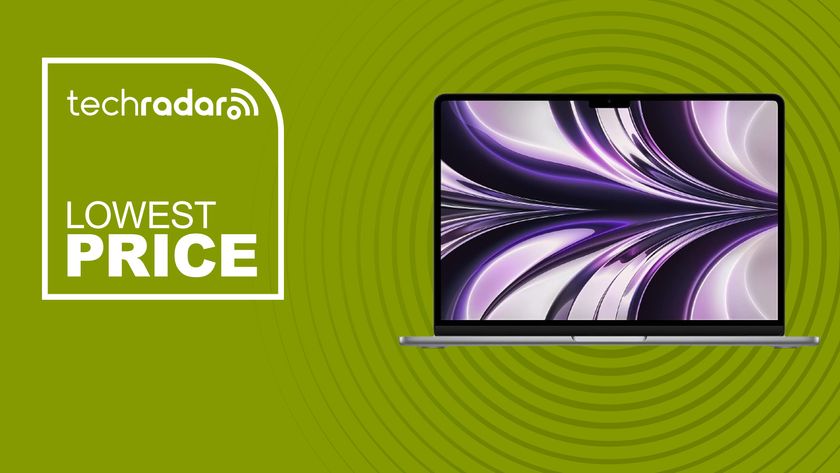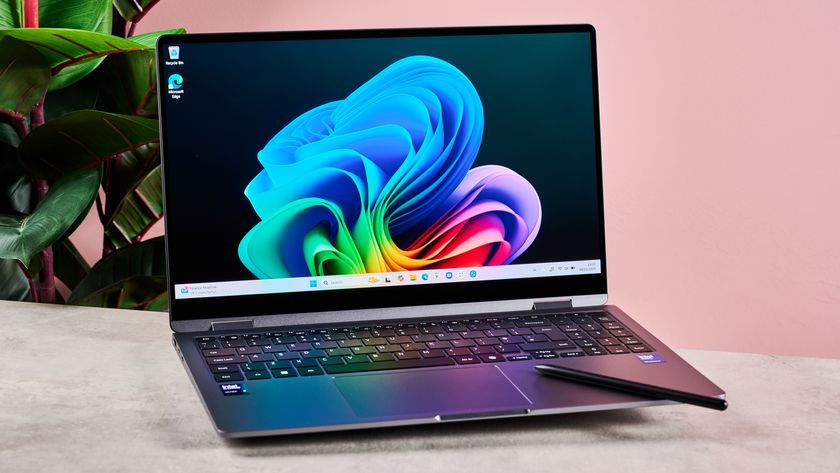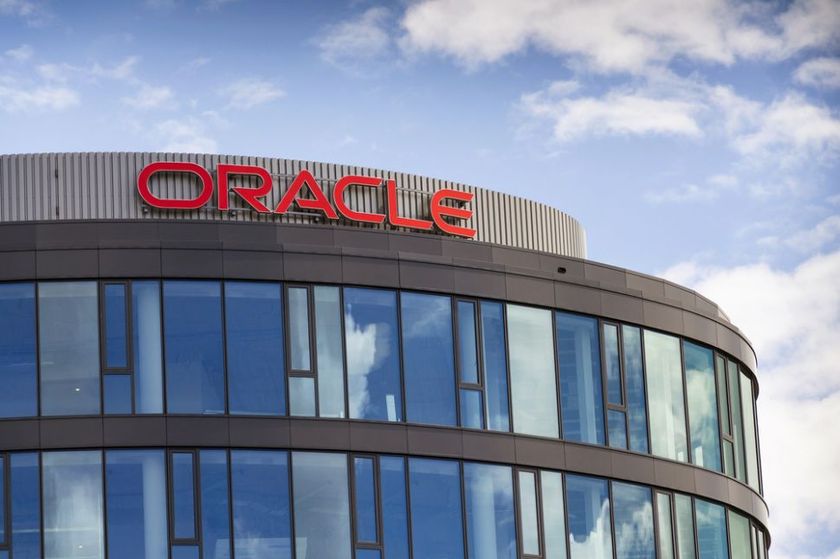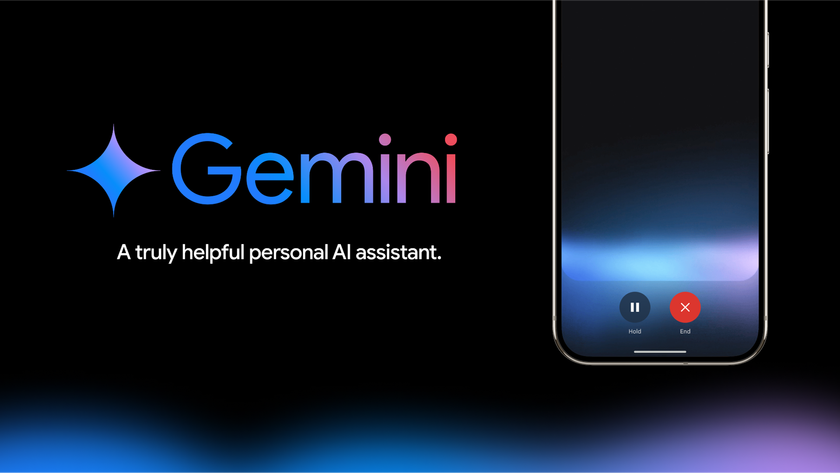CES 2013: top 10 moments
Phones, cameras, tablets, TVs, gaming and more

Another CES has come and gone, leaving sparkles of Ultra HD in our eyes and visions of Steamboxes in our minds. Now that we've left the neon lights of Las Vegas behind us, it's time to dissect the show over and over again, until CES 2014 rolls around.
We've already told you our favorite new products from the show, and distributed our Best of CES 2013 ribbons to the most worthy candidates. Now allow us to regale you with our 10 favorite moments from the show.
Hopefully it'll be enough to tide you over till next year, or until the Mobile World Congress in February. It really never ends, does it?
1. Bill Clinton for Samsung
As usual, Samsung's CES showing was impressive, but all the stops were truly pulled out when Former President Bill Clinton took the stage.
After a talk about semiconductors, the Korean tech giant really electrified the crowd by letting Clinton take the stage for a 20-minute closer. A talk from Bill doesn't come cheap either, with the former commander in chief's speaking fee being reported to be as high as $500,000 for a single appearance. One of Samsung's 4K televisions seem affordable by comparison.

Clinton didn't waste any time, breaking the ice with cracks about his run in the Oval Office, a time when "cell phones weighed five pounds..." and "there [were] a grand total of 50 websites on the internet."
Clinton steadily moved into serious statesmen mode, lecturing the crowd about the benefits of technology to the developing world. Banking by cell phone in Haiti, social media and the Arab spring and bracing for global warming. Finally, Clinton was met with applause when he mentioned American gun violence problem, and his support of the assault weapons ban.
Get daily insight, inspiration and deals in your inbox
Sign up for breaking news, reviews, opinion, top tech deals, and more.
By hiring Clinton for its keynote, Samsung brought a human element to its presentation. The former president engaged the crowd like a true raconteur, and gave us something to think about besides the latest spec sheet.
2. Qualcomm's 'Born Mobile' press conference
Very often it's not the products and services that steal the stage but the people (and puppets) who occupy it.
Qualcomm's opening press conference was no exception to this rule – the chipmaker took CES by storm with a quirky, whacked out performance that felt more like a drug-induced dream than a presentation by a major corporation.
Not only did Microsoft CEO Steve Ballmer bound onstage to croak about Qualcomm and Microsoft's partnerships, Sesame Street's Big Bird was there to demo a Qualcomm-powered app. Or he may have been there to help get the taste of Ballmer out of everyone's mouth, we're not sure.
OK, Qualcomm did announce new high-end mobile-friendly chipsets, including the Snapdragon 800.
Snapdragon 800 is said to deliver 75 per cent better battery performance than its S4 Pro line while also supporting Ultra HD 4K video on phones and computers.
Improved motion-less photography, global 4G/LTE (with certain add-ons) multi-channel HD audio and support for higher-res displays are also part of the 800 offering.
Snapdragon 600, said to save 40 per cent the battery life of the S4 and aimed at mid-to-high-end mobile devices, was also unveiled during Qualcomm's performance…er….press conference.
When the chips come to fruition, there's an excellent chance we'll see a big bump in what our phones and computers are capable of as well as Smart TVs, tablets, and digital media adapters.
However, it's hard to pay attention to chip specs when you have Desmond Tutu, Maroon 5 and an electric Rolls Royce coming at you from every direction.
3. Danny DeVito talks tech
We found ourselves sitting two rows away from one of Hollywood's funniest actors one afternoon during CES.
It was a serendipitous occurrence: a PR acquaintance shuttled us to a seat at Panasonic's stage on the show floor just as one talk was wrapping and Danny DeVito's one-on-one with a CNET editor was about to begin.

Lugging out his own chair, DeVito set the tone for the interview right away: after filling in some background on a film clip and asking if the audience could see him and the screens, he got up to leave 20 seconds later with a wave and a "Thanks very much!"
He sat back down and proceeded to talk about his use of Twitter, his favorite piece of tech (his iPhone) and how he utilizes tools like Final Cut Pro when he's working on a movie for 30 more minutes.
DeVito also showed the audience his de-socked "troll foot," his right foot that he snaps photos of in various locations and then tweets to his followers. Did it have anything to do with technology? Not really. Was it memorable? Absolutely.
He was irreverent, hilarious and did manage to tie in tech with film making while cracking up the audience all the way home, leaving us hoping the CES denizens bring him back next year.
4. Sony gets humble, then gets serious
If it lights up, beeps or boops, you can bet that Sony makes one. The electronics giant has its logo on all manner of products, but at CES this year, it confessed to taking its eye off the ball.
"We used to make people say wow all the time," said a disembodied voice over a loudspeaker at Sony's press conference. "Our unique combination of artists and engineers set out to create a surprise everyday. We forgot the power of that for a while." Humble, and surprisingly wistful.
A refocused Sony is now hoping to recapture the public's wonder, and purchasing power, with a new quad-core smartphone, the Xperia Z. This is after another show of humility in November 2012, when it admitted that its phones can't compete with likes of the iPhone 5 and Galaxy S3. The fact that this new phone is waterproof might just inspire a few wows.

Elbowing into the top phone tier with Apple and Samsung will be tough work, but we've never seen a more apt attitude than what Sony displayed this year at CES. We look forward to giving the Xperia Z a full review, perhaps while in the bath.
5. Hands-on with the Microsoft Surface Pro
When Microsoft announced it would be entering the hardware market with the Surface, heads turned and mouths were slightly agape. With this tablet that impersonates a laptop, were we seeing Microsoft impersonating Apple by producing both the machine and the software that would run it?
We've already given the Surface RT a review. While it's a sleek machine capable of working as a real productivity center, its Windows RT software makes it somewhat limited.
The power users are waiting for the Surface Pro, and we went hands-on with it CES this year. While Microsoft wouldn't let us take photographs, or say exactly what chips are powering it, we've got everything we were allowed to know written up in our hands on.
6. Sony and Panasonic both debut the 'world's first' 4K OLED TV
At CES, tech manufacturers are always eager to shout FIRST!!! over the latest breakthrough. Given that, it's not often that we see almost simultaneous accomplishments from leaders in the same field.
Yet that's what happened at the Sony and Panasonic booths. Both companies are moguls in the world of Ultra HD displays, and both used CES to unveil what they called the "world's largest 4K OLED," with Sony even claiming the "world's first".
Unfortunately, no one had a stopwatch running as this mammoth displays came off the assembly line, so it can't really be said who was first.
At CES, the rivalry between both camps seemed jovial. A representative from Sony admitted they had no clue Panasonic would be making a similar debut. Panasonic made news by pointing out that it was partnering with Sony to pool resources to mass produce this next generation TV in HD technology.
Ultimately, its a win for consumers. This partnership is based around bringing down the cost of manufacturing these Jumbotrons.
7. Xi3 Corporation and Valve talk Steam-powered Piston
Gaming is usually a sideshow at CES, but it stole major spotlight this year thanks to an announcement by Valve.
Only the corporation behind Half-Life could take people's eyes off 8-foot televisions. The Seattle-based company used its presence at CES to announce the coming off the so-called Steam Box, a micro form factor PC for the living room.
While Valve is still being cagey, the plan seems to be this: work with multiple hardware manufacturers to build competing Steamboxes with varying specs. The possibility of Valve producing its own machine internally remains on the table.

The company chosen to be Valve's first public partner in this venture is the Xi3 Corporation. Xi3 has a CES presence, too. They showed off the Piston, said to be the fruit of their partnership with Valve.
While their representatives wouldn't talk specs or availability, or even refer to the prototype as a Steam Box, Xi3 already has powerful and compact systems on the market.
Like the rest of the gaming community, our curiosity was piqued. The possibility of a machine like this bringing PC gaming to the living room, and competing with the upcoming Xbox 720 and PS4 is beyond exciting.
8. Project Shield breaks cover
Project Shield was one of the hot topics of CES. Whether on the escalator, around the buffet table or in the press room, someone was talking about Nvidia's handheld gaming offering.
The company seemingly came out of left field with the device's announcement during its Monday press conference.
Calling it "100 per cent Android", the 4K controller plus 5-inch multitouch screen also houses the company's new Tegra 4 processor. It really is pure Android – Project Shield runs Jelly Bean 4.2.

"Project Shield was created by Nvidia engineers who love to game and imagined a new way to play," said Jen-Hsun Huang during the press conference.
"We imagined a device that would do for games what the iPod and Kindle have done for music and books, letting us play in a cool new way. We hope other gamers love Shield as much as we do."
Its 20-plus hours of playing time and 720p plus 294 dpi retinal screen make it a handy device to play. Of course, it's limited to streaming games in the home, a tether Nvidia is sure to be working on cutting.
With launch games like Call of Duty: Black Ops 2 and Need for Speed: Most Wanted, plus access to users' PC, Steam, TegraZone and Google Play titles, Project Shield literally has access to the biggest launch lineup for any handheld gaming system ever.
That alone is worth a look for most gamers, and because its designs likely extend far beyond Project Shield, we can't wait to see where Nvidia plans to take gaming.
9. Big and thin - Chinese phones kick down the door
How practical is a 6.1-inch phone? Huawei, for one, wants users to find the answer to that question.
The Chinese phone maker threw down the size gauntlet at CES with the the Ascend Mate, a gargantuan phone with 1,280 x 720p display that takes up most of the face.
The specs of the phone aren't terribly impressive – it owns a 1.4GHz quad-core that lagged and only housed 768 of RAM – though its 4,050mAh battery matches its size.
Although it's not the slugger users might expect of such a massive phone, what impressed us most about Huawei's handset was the company's boldness in presenting it on the tech world's biggest stage.
The Mate can at least serve as a jumping off point for those who want to have the conversation of where phone and tablet begins and ends.
Joining Huawei in the spotlight was compatriot company ZTE, which introduced the Grand S during CES and in doing so brought forth the world's thinnest 5-inch quad-core handset.
With a profile of just 6.9mm, the Grand S is slight yet punchy, and though the UI was lacking, we think ZTE could put the hammer to the anvil and come up with a phone worthy of the title "flagship" by the time it launches.
The Grand S, like the Mate, will debut in China first with other unspecified countries to follow. Though it may be some months yet before consumers will have the choice between either phone or competitors, we were struck by both firms' ability to bring forth something different and something to at least take notice off.
10. Razer Edge cuts through CES clutter
One of the real showstoppers was the Razer Edge, formerly Project Fiona, a gaming tablet/laptop hybrid that's as cool as its name suggests.
Razer created a real head turner in its gamer gadget, and interestingly decided to debut it in Vegas and not during E3 2013.

The Windows 8 hybrid comes 10.1-inch tablet screen that fits into a controller-flanked gamepad or keyboard dock. There's also a Pro version for a higher price and with a more powerful processor, plus some other pumped up specs.
What impressed us more than the promised convenience of anywhere/any type of gaming is the fact that Razer has seemingly reinvented (or at least reimagined) the tools gamers need.
While there are still kinks to work out, the Edge's arrival is one of the show's best moments for the sheer fact it dared to do something different.
The Consumer Electronics Show, or CES, is one of the largest showcases of new technology in the world.
Hosted by the Consumer Electronics Association in Las Vegas, CES 2013 will open to press and exhibitors from every facet of the electronics industry, and TechRadar is here to deliver the latest news from the show.
We've descended upon the gambling capital of the world for four days to bask in the glow of the latest computers, televisions, cameras, phones and more.













